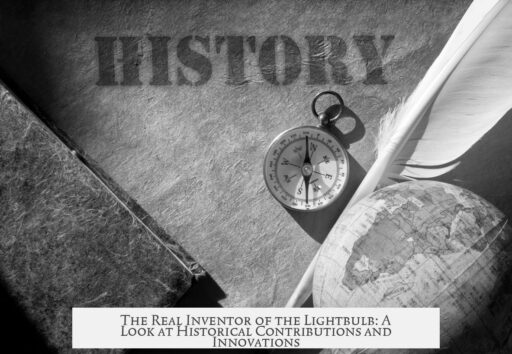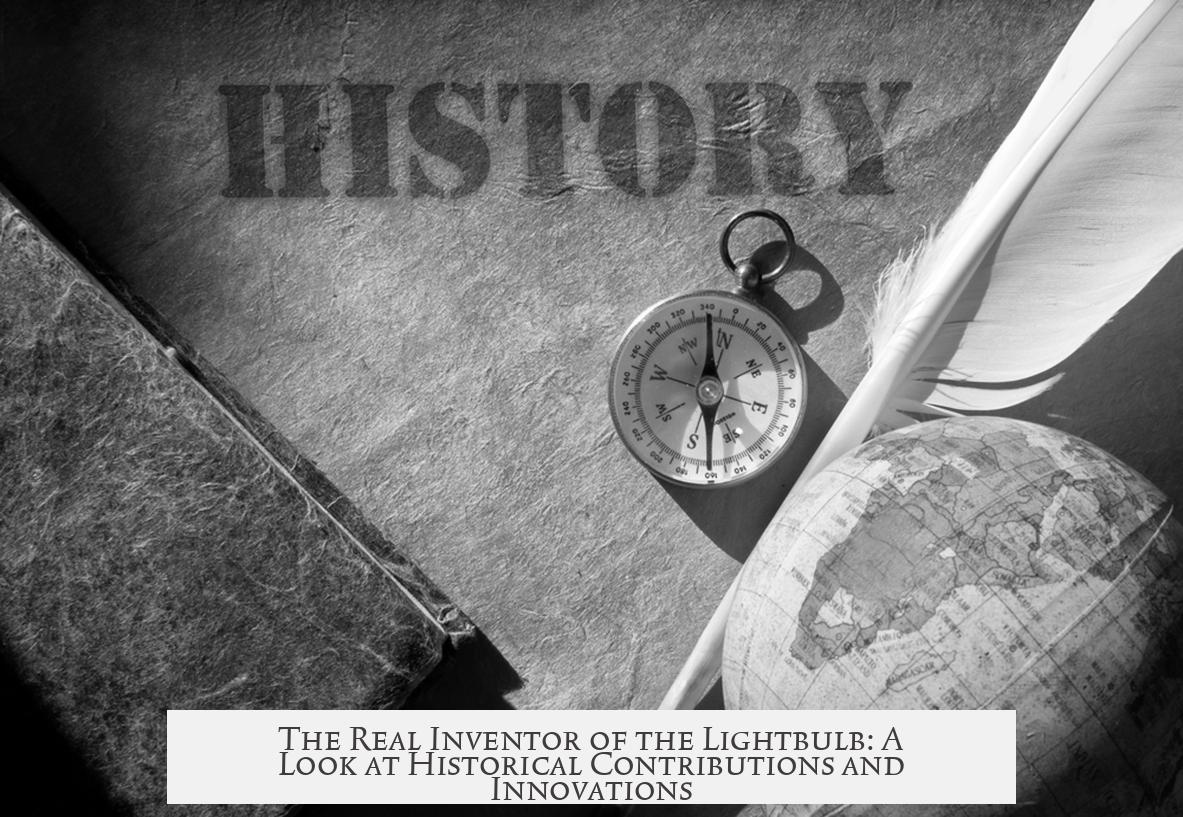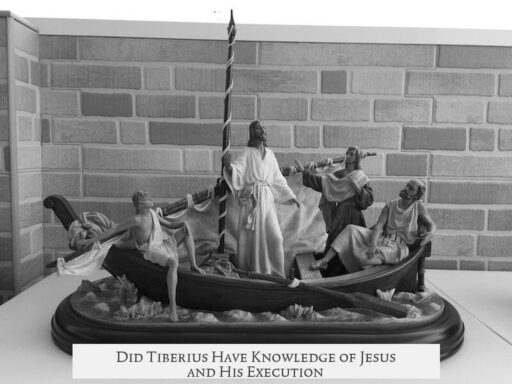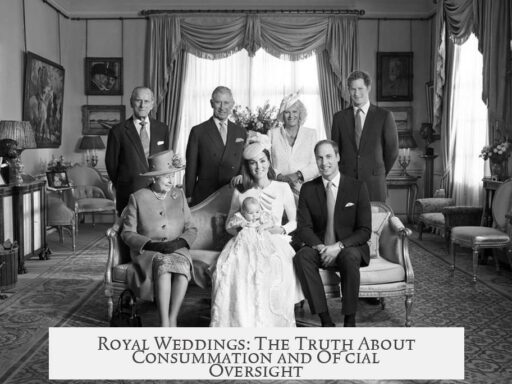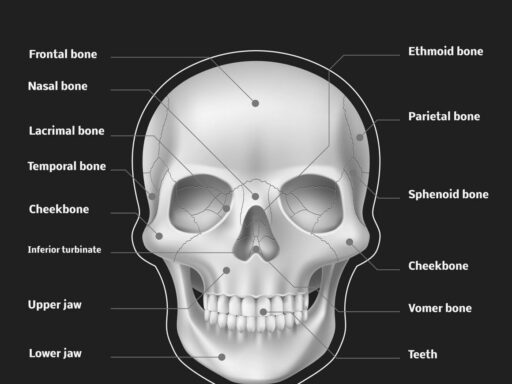The invention of the lightbulb is a cumulative achievement involving multiple inventors over nearly 150 years, rather than the work of a single person. While Thomas Edison is often credited, his role primarily centers on popularizing and commercializing the device.
Early work began with demonstrations of electric light through incandescence in the 18th and early 19th centuries. Ebenezer Kinnersley in 1761 first demonstrated producing visible light using electricity. Later, in 1802, Humphry Davy showed that platinum strips could glow when electrified. These experiments were impractical but laid foundational ideas.
The first true incandescent lightbulb-like devices emerged in the 19th century. James Lindsay created a practical electric light in 1835 comparable to candlelight, though it was not further developed. Warren de la Rue designed a near-vacuum bulb with a metal filament in 1840. Marcellin Jobard made a similar bulb using carbon filament in 1838. Frederick de Moyens patented a device using metal filaments, marking an early pattern for the lightbulb.
In Russia, Alexandr Lodygin patented a bulb in 1874 filled with inert nitrogen gas, an approach modern bulbs use but originally with different gases. Meanwhile, Canadian inventors Matthew Evans and Henry Woodward patented a nitrogen-filled carbon filament bulb in 1874 but later sold their patent to Edison.
Joseph Swan in England worked on vacuum lamps with carbon filaments starting in the 1840s. He became a notable figure as both inventor and entrepreneur, helping popularize electric lighting in England. Swan later formed a business partnership with Edison in the 1880s.
Edison’s work began only in 1878. He did not create the original lightbulb but improved its practicality by developing the mass production of bulbs and filament materials. Edison’s focus was on creating carbon filaments and methods like Arturo Malignani’s improved vacuum evacuation. He established companies to commercialize electric lighting and formed alliances, including the Edison and Swan United Electric Company in England.
The transition to modern-style bulbs took further steps in the early 20th century. In 1897, Walther Nernst created a ceramic-carbide lamp needing no vacuum or inert gas, more efficient than carbon filament lamps of that era. Sandor Just and Franjo Hanaman, in 1904 Austro-Hungary, patented the first tungsten filament bulb filled with argon gas — closer to contemporary bulbs. Later innovations included the ‘coiled-coil’ filament patented by Bernie Lee Benbow in 1917 and Junichi Miura’s double-coil filament in 1921.
| Inventor | Contribution | Year |
|---|---|---|
| Ebenezer Kinnersley | First demonstration of electric incandescence | 1761 |
| James Lindsay | Practical electric light similar to candlelight | 1835 |
| Frederick de Moyens | First patent for lightbulb pattern | 1841 |
| Joseph Swan | Vacuum lamps with carbon filaments | 1840s-1880s |
| Alexandr Lodygin | Inert gas filled bulb | 1874 |
| Thomas Edison | Mass production, popularization, carbon filaments | 1878 onward |
| Just & Hanaman | Tungsten filament, argon gas bulb | 1904 |
| Benbow & Miura | Coiled coil and double coil filaments | 1917, 1921 |
The evolution of the lightbulb reflects contributions from various inventors across different countries and decades. Initially, generating visible light with electricity was experimentally demonstrated in the 18th century, but a practical and commercially viable electric light emerged only through incremental advances.
Thomas Edison’s often celebrated role is better understood as one of a developer and entrepreneur who improved filament materials, manufacturing processes, and public acceptance. He purchased patents from earlier inventors, like Moses Gerris Farmer, and sold bulbs through his companies. Edison’s entry into electric lighting began years after other inventors created functioning devices.
The most modern iterations of the incandescent lightbulb, especially those using tungsten filaments in inert gases, date from the early 20th century. These improvements eventually led to bulbs with longer lives and better efficiency. Subsequent filament designs such as coiled coils have become standard in lighting technology.
- The lightbulb invention involves many inventors over 150+ years, not a single person.
- Early forms used metal and carbon filaments, evolving gradually.
- Edison popularized and commercialized electric lighting, starting in 1878.
- Modern tungsten filament bulbs with inert gases appeared by 1904 via Just and Hanaman.
- Innovations continued into the 20th century with filament designs enhancing bulb life.
Who Actually Invented the Lightbulb?
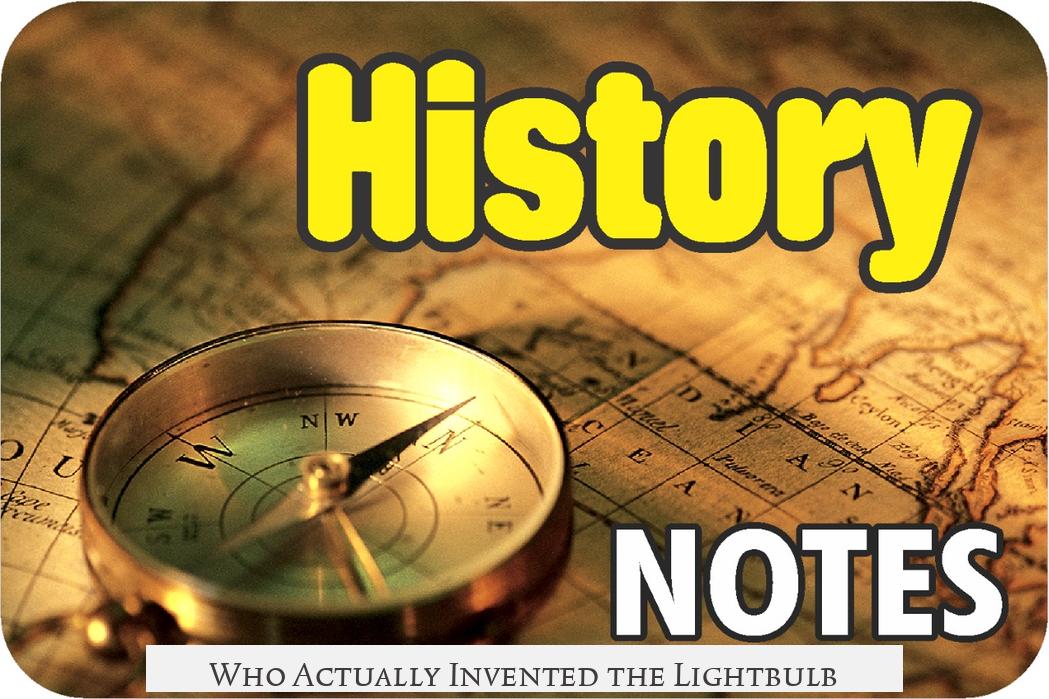
If you ask, “Who invented the lightbulb?” the simple answer is: it’s not just Thomas Edison. The invention of the lightbulb was a long journey involving many brilliant minds over more than a century. So, who truly deserves the credit for lighting up our world? Let’s embark on a well-lit path through time to find out.
Thomas Edison: The Man Who Made Lightbulbs Famous, Not Invented
Everybody’s heard of Thomas Edison and his “invention” of the lightbulb. But here’s a twist: Edison basically did nothing to invent the lightbulb itself. Most of his real work was in popularizing the idea and figuring out how to produce lightbulbs on a massive scale. That’s right, Edison was more of a master marketer and industrialist than the original inventor.
Incidentally, Edison’s key lightbulb patent was for a device originally created by Moses Gerris Farmer in 1859. Edison bought this patent and focused his efforts on making carbon filaments. Unfortunately, carbon filaments proved to be a dead end technologically.
But Edison had another angle. He developed efficient mass-production methods for filaments and bulbs, acquiring patents like Arturo Malignani’s better vacuum techniques around 1895. Edison’s Electro-Dynamic Light Company, founded in 1878, became the powerhouse pushing the electric light into the mainstream, especially in America. In England, Edison even teamed up with Joseph Swan to launch the Edison and Swan United Electric Company. He stepped into the lightbulb field in 1878 – long after many inventors had already built working prototypes.
A Glimpse at Early Sparks and Experiments
Long before Edison flicked his filament, there were early glimmers of electrical light. In 1761, Ebenezer Kinnersley, a scholar from the College of Philadelphia, demonstrated “electroincandescence” — that’s producing visible light by running electricity through a conductor. While not practical, it was the very first recorded demonstration lighting the way.
Humphry Davy, another pioneer, independently repeated similar experiments in 1802 with a platinum strip glowing under electric current. Unfortunately, both Kinnersley’s and Davy’s lights were dim and costly to maintain. Their results laid the groundwork but were far from the lightbulbs we know today.
Early Practical Electric Lights: The Incandescent Bulb Takes Shape
The actual term “light-bulb” blooms with James Lindsay, a Scottish inventor who in 1835 built an electric light comparable to a candle’s glow. However, Lindsay’s light was a side project and never developed further.
Around the same time, a Belgian inventor, Marcellin Jobard, created a device using a carbon filament covered in a glass bulb. Just a year later in 1840, Warren de la Rue improved this idea with a thin metal strip inside a nearly-vacuum glass bulb — this makes it one of the earliest examples close to modern lightbulbs.
Frederick de Moyens simultaneously patented a design where he experimented with both metal and carbon filaments, leaning toward metal for commercial reasons, taking one of the earliest formal steps toward our familiar incandescent design.
Worldwide Developments: Russia and Canada Join the Glow Race

The invention was clearly a hot topic around the globe. Russia’s Alexandr Lodygin stepped forward in 1872, inventing a bulb filled with inert gas (nitrogen, unfortunately not argon or xenon which came later), rather than a vacuum. This was a pioneering step that resembles modern bulbs.
Meanwhile, two Canadian inventors, Matthew Evans and Henry Woodward, created a carbon-filament bulb, also filled with nitrogen, in 1874. Their efforts didn’t launch commercially, and they sold their patent to Edison — adding yet another tile to the intricate mosaic of invention.
Joseph Swan: England’s Electric Lighting Crusader
Joseph Swan has a claim just as bright as Edison’s. Starting work in the 1840s, Swan was focused on making vacuum lamps using carbon filaments. But he was not just an inventor; he was an entrepreneur determined to bring electric light to England’s homes.
Swan and Edison’s relationship was like a soap opera, full of competition and eventual collaboration. Their companies merged to form Edison and Swan United Electric Company, blending their technology and business savvy to spread electric lighting.
The Road to the Modern Lightbulb: From Clay to Tungsten
The lightbulb’s evolution took a fascinating turn in 1897 when German physicist Walther Nernst invented a lamp with a ceramic-carbide filament. This lamp didn’t need a vacuum or inert gas environment and was far more efficient than early carbon-filament bulbs. Though popular, Nernst’s invention eventually bowed to the tungsten filament’s emergence.
In 1904, Sandor Just and Franjo Hanaman patented what is widely recognized as the modern lightbulb in Austro-Hungary. Their bulb had a glass container filled with argon and a tungsten filament, mimicking today’s bulbs. Their company, Tungsram, still echoes through history, operating independently until 1992 before becoming a General Electric subsidiary.
Then came the finishing touches: American Bernie Lee Benbow patented the “coiled coil filament” in 1917. Imagine a coil of wire wrapped around another coil—ingenious for heat resistance and efficiency. Japan’s Junichi Miura followed with the first double-coil lightbulb in 1921 and patented a machine for mass-producing these filaments in 1936, enabling the affordable, durable bulbs we use today.
In Summary: A Collective Triumph of Innovation
The “invention” of the lightbulb is less a single eureka moment and more a woven tapestry of contributions from many inventors:
- **1760s:** Ebenezer Kinnersley first demonstrates electroincandescence.
- **1835:** James Lindsay creates a practical electric light source mimicking candle brightness.
- **1840s:** Innovations from Warren de la Rue, Marcellin Jobard, and Frederick de Moyens advance the filament and vacuum concepts.
- **1870s:** Alexandr Lodygin (Russia) and Evans & Woodward (Canada) push towards inert gas-filled bulbs.
- **1878:** Edison enters the scene, focusing on production and popularization.
- **1880s:** Joseph Swan leads vacuum lamp development and entrepreneurship in England.
- **1897 – 1904:** Nernst’s ceramic lamp and Just & Hanaman’s tungsten filament lamp bring near-modern efficiency.
- **1917 – 1936:** Benbow and Miura finalize filament design and enable mass production.
So next time someone credits Edison alone, share this colorful history. The lightbulb is truly a team effort, crafted by a global cast of inventors who lit the way with their combined ingenuity.
Why Does This History Matter?

Understanding the collaborative nature of inventions like the lightbulb can encourage us to appreciate modern technology more deeply. One invention rarely belongs to just one person—it’s often a relay race where many run stretches to cross the finish line.
Furthermore, Edison’s story is a lesson in the power of bringing inventions to the masses. Sometimes, the most vital invention is not the idea itself but how it’s delivered to public hands. Edison could be considered the “champion distributor” of electric light rather than its original inventor.
Ready to Illuminate Your Knowledge?
Next time you switch on a light, think of Ebenezer Kinnersley’s first spark in 1761. Picture the Scottish candle-light Edison came upon in 1835, the near-vacuum bulbs of Warren de la Rue, and the tungsten brilliance of Just and Hanaman. The lightbulb isn’t just a bulb; it’s a beacon of human creativity and persistence.
Why settle for the simple Edison myth when the true story is richer and more exciting? Many minds contributed to pushing from darkness to light. And isn’t that a much brighter tale?
Who was the first to demonstrate the concept of electric light?
Ebenezer Kinnersley demonstrated electric incandescent light in 1761.
Later, Humphry Davy showed in 1802 that a heated metal strip could glow.
Did Thomas Edison invent the lightbulb?
Edison did not invent it but popularized it.
He focused on mass production and commercial use after 1878.
He bought existing patents, including Moses Farmer’s early work.
Which inventors worked on early lightbulb prototypes before Edison?
- James Lindsay made a candle-like electric light in 1835.
- Warren de la Rue created a near-vacuum bulb in 1840.
- Marcellin Jobard used carbon filaments in 1838.
- Joseph Swan advanced vacuum lamps with carbon filaments in England.
What made Alexandr Lodygin’s design different?
Lodygin used an inert gas inside his bulb instead of vacuum.
He patented this Russian invention in 1874.
This concept influences modern gas-filled bulbs.
When was the tungsten filament lightbulb invented?
In 1904 by Sandor Just and Franjo Hanaman in Austro-Hungary.
It featured argon gas and tungsten filament, like modern bulbs.
How did Edison contribute if he didn’t invent the bulb?
- He improved carbon filament production methods.
- Founded companies to produce and sell bulbs widely.
- Partnered with Joseph Swan to expand markets in England.
